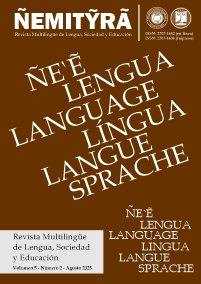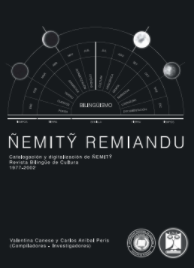Writing Skill Training of tertiary students by using Letter Writing on All Topics App
DOI:
https://doi.org/10.47133/NEMITYRA2023d11-2A10Palabras clave:
writing; skill, mobile, learning, studentsResumen
Writing in English is a productive skill, more difficult for students to manage than perceptive skills as reading and listening. Therefore, the more resources teachers provide students with to strengthen writing the better. The paper’s aim is to initially analyze the training of pre-intermediate level tertiary students by using the Letter Writing on All Topics application. A poll, Iadov technique, documental analysis, descriptive statistics, and MapALL analytical approach are used as tools and methods. The study conducted achieves positive results, showing greater improvement of students’ writing skill by using the app. Hence, mobile learning has turned into an outstanding and efficacious teaching resource for learning foreign languages.
Referencias
Alexiadou, E. (2022). Analysis and Evaluation of Interaction Applications for Effective Mobile-Assisted Language Learning [Master Thesis, Aristotle University of Thessaloniki]. IKEE Institutional Repository of Scientific Publications.
Andersen, K. (2019). Perceived User Experience Associated with M-Learning: An Exploratory Case Study [Doctoral Project, Ashford University].
Banister, S. (2010). Integrating the iPod Touch in K-12 education: Vision and vices. Computers in the Schools, vol. 2: 121.
Batista, N. Valcárcel, N., Leyva-Vázquez, M., Smarandache, F. (2018). Validation of the pedagogical strategy for the formation of the competence entrepreneurship in high education through the use of neutrosophic logic and IADOV technique. Neutrosophic Sets and Systems, 22.
Fouz-Gonzalez, J. (2020). Using apps for pronunciation training: An empirical evaluation of the English File Pronunciation App. Language Learning & Technology, 24, 62-85.
Guo, H. (2014). Analysing and Evaluating Current Mobile Applications for Learning English Speaking. [Master Dissertation, University of London] TeachingEnglish.
Kim, H., & Kwon, Y. (2012). Exploring smartphone applications for effective Mobile-Assisted Language Learning. Multimedia-Assisted Language Learning, 16, 31–57.
Kukulska‐Hulme, A., & Viberg, O. (2018). Mobile collaborative language learning: State of the art. British Journal of Educational Technology, 49(2), 207-218.
Lindaman, D., & Nolan, D. (2015). Mobile-Assisted Language Learning: Application Development projects within reach for language teachers. IALLT Journal of Language Learning Technologies, 45(1), 1-22.
Mitra, S. (2005). Self-organising systems for mass computer literacy: Findings from the 'hole in the wall' experiments. International Journal of Development Issues, 4, 71.
Rosman, P. (2008). M-learning- as a paradigm of new forms in education. E + M Ekonomie a Management, 1, 119-125. Retrieved from ProQuest ID: 1569056991.
Descargas
Publicado
Número
Sección
Licencia
Derechos de autor 2023 Oraily Madruga Rios; y Revista Ñemitỹrã

Esta obra está bajo una licencia internacional Creative Commons Atribución-NoComercial-SinDerivadas 4.0.










